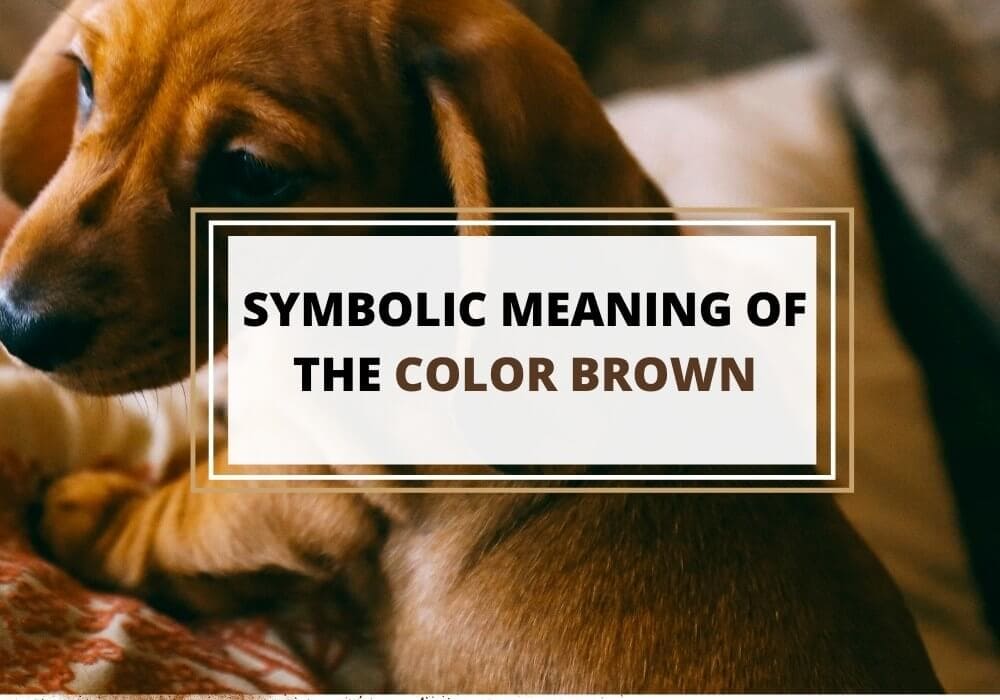
Table of Contents
Brown is a color that’s all around us, found literally everywhere in nature – trees, animals, the soil. Perhaps this is why people associate the color so much with safety and security. However, though we take it for granted and don’t realize it’s importance, it plays a big role in our lives.
Let’s take a closer look at the history of the color brown, what it symbolizes and how it’s been used throughout history.
History of the Color Brown
It’s difficult to say exactly when the color brown first came into existence but evidence has shown that it’s been quite popular and used for artwork since prehistoric times. The earliest brown pigment used for paintings was ‘umber’, a reddish-brown or natural brown pigment made of clay that contained iron and manganese oxide. Umber, which dates back to 40,000 B.C., was much darker than sienna and ochre, other similar earth pigments.
1. Use in France
There are many animal paintings to be seen on the Lascaux cave walls, all of which were brown and date back to about 17,300 years. Brown was actually disliked by French impressionists because they preferred brighter and purer colors but later on its status changed and it became more popular.
2. Use in Egypt
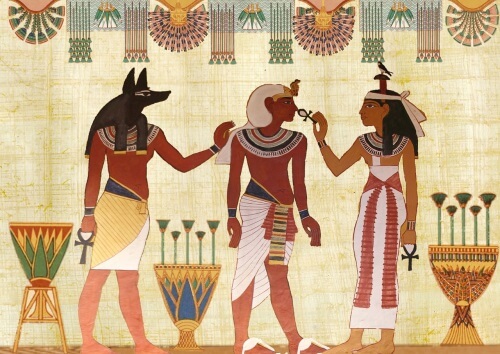
The ancient Egyptians used umber to paint female figures on the walls of their tombs. They had interesting painting techniques and ways of making the paints, such as mixing the colors in a binder so they would stick to the plaster or the surface that was being painted.
They also had other ways of making the paint, like mixing the ground pigment with animal glue or vegetable gums so that it would be workable and would fix fast to the surface.
3. Use in Greece
The Ancient Greeks used umber and lightened it up to paint on Greek vases and amphora (two-handled vessels used as storage jars and one of the most important types of vessels in Greek pottery). They used the light tan color as a background to pain black figures on, or vice versa.
The ancient Greeks also made a reddish-brown type of ink called sepia, derived from the ink sac of Sepia, the common cuttlefish. The ink gained popularity quickly and was used by famous artists such as Raphael and Leonardo da Vinci during the Renaissance period. Some artists still use it today.
4. Use in Rome
The Ancient Romans also produced and used sepia just like the Greeks. They had brown clothing which was associated with barbarians or lower classes. The upper classes preferred to ignore those wearing brown since it was associated with poverty.
5. Use in the Middle Ages and the Renaissance

During the Middle Ages, the monks of the Fransiscan order worn brown robes which was symbolic of their poverty and humility. Every social class had to wear a color that was considered suitable for their station and brown was the color of the poor.
The English used wool to make a coarse homespun cloth called russet, dyed with madder and woad to give it a brownish shade. They were required to wear clothes made from this material in 1363.
During this time, dark brown pigments were hardly ever used in art. Artists preferred distinct, bright colors like blue, red and green rather than dull or dark colors. Therefore, umber ceased to become as popular as it was before by the end of the 15th century.
The late 15th century saw a greater increase in the use of brown with the arrival of oil painting. There were four different browns to choose from:
- Raw umber – a dark brown clay which was mined in Umbria, Italy
- Raw sienna – mined near Tuscany
- Burnt umber – this was made by heating Umbrian clay to the point where it turned darker
- Burnt sienna – made just like burnt umber, this pigment got its dark reddish brown color by being heated until it changed color.
Later on, in Northern Europe, a painter by the name of Jan van Eyck used rich earthy browns in his paintings which set off brighter colors perfectly.
6. Use in the 17th and 18th Centuries
In the 17th and 18th centuries, brown became popular and ubiquitous. Rembrandt Van Rijn loved to use the color to produce chiaroscuro effects and he also incorporated umber into his paintings since it made them dry out faster. Apart from umber, Rembrandt also started to use a new pigment called Cologn earth or Cassel earth. The pigment had a natural earthy color and was made of over 90% organic matter like peat and soil.
7. Brown in Modern Times
Today, the color brown has turned into a symbol for things that are inexpensive, natural, simple and healthy. People used brown paper bags to carry their lunches and brown paper to wrap packages. Brown sugar and bread are considered healthier and more natural. Like green, brown is a symbol of nature and simplicity.
What Does the Color Brown Symbolize?
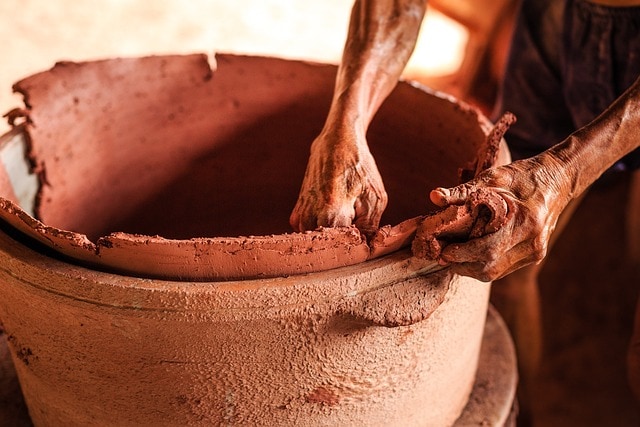
Brown, often linked to the earth, stands for stability and resilience. It symbolizes strength and dependability, reminding us of the solid ground beneath our feet. This color’s earthy connection brings to mind nurturing and fertility, much like soil nurturing plants and trees.
In various cultures, brown represents the feelings of home, warmth, and comfort, offering a sense of safety and security. It’s also tied to simplicity and honesty, showing a straightforward, down-to-earth quality. Psychologically, people see brown as stable and supportive, giving a feeling of order and structure.
But brown means more than just physical stability; it also symbolizes emotional grounding and balance. In fashion and design, brown is used to create a sense of sophistication and elegance. Its natural and neutral shades work well with other colors, providing a versatile backdrop.
Brown’s wide range of symbolic meanings makes it a color that connects with many human emotions and cultural values, from nature’s earthiness to the foundations of human life and comfort.
Variations of the Color Brown – Symbolism
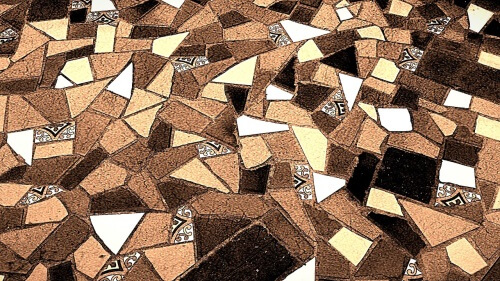
The color brown boasts an extensive palette of shades, each carrying its own unique appeal and associations. At the lighter end of the spectrum, we have beige, a soft and versatile hue that conveys subtlety and understated elegance. It’s often used in spaces to create a calm and neutral backdrop.
Moving slightly darker, there’s tan, a warm and inviting shade that resembles the color of tanned leather. Taupe, blending gray and brown, offers a sophisticated and contemporary feel, suitable for modern designs and decors.
Chocolate brown, rich and deep, evokes a sense of luxury and warmth, often used in furniture and interior design for its comforting and enveloping quality. Then there’s chestnut, a reddish-brown shade, reminiscent of the nut it’s named after, offering a rustic charm.
Mahogany, with its reddish undertone, brings a sense of refined luxury and is commonly found in wood finishes and elegant furnishings. Burnt umber, a darker and more intense hue, has a robust and earthy quality, making it a favorite in artistic and design contexts for adding depth and intensity.
Each of these variations of brown brings its own character and mood, offering a wide range of possibilities for use in interior design, fashion, and art, reflecting the diverse and rich nature of the color brown.
Pros and Cons of the Color Brown
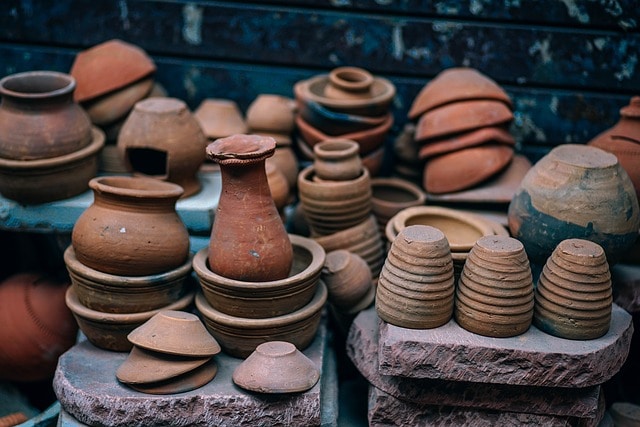
Brown, known for its earthy and natural tones, has both pros and cons. A big advantage is that it stands for stability, reliability, and resilience. This makes it a favorite in design and fashion, where it brings a feeling of being grounded and dependable. Its natural shades often create a warm and comfortable atmosphere, especially in interior design.
Brown blends well with many colors, making it a great neutral background that enhances other shades. In fashion, brown is timeless and doesn’t go out of style easily. However, there are downsides. Sometimes, people see brown as dull or unexciting, especially if it’s used too much or not mixed well with other colors. It doesn’t catch the eye like brighter colors, which might make it less visually appealing.
In some cultures, brown can have negative meanings, like being linked to dirt or decay. This can influence how people see and use the color. So, while brown is versatile and warm, it’s important to use it carefully to highlight its good points and avoid the bad ones.
Symbolism of Brown in Different Cultures

1. Western Cultures
In Western societies, brown often stands for the earth, showing stability and reliability. It’s practical and down-to-earth, representing things that are solid and last long. Brown also means resilience, simplicity, and health, reminding us of earth and nature.
In fashion and interior design, it adds warmth and comfort, making spaces welcoming and cozy. Brown’s versatility lets it stand out or complement other colors well, making it popular in design.
2. Native American Cultures
For many Native American cultures, brown is sacred and deeply connected to the earth. It represents the land, life’s foundation, and ties closely to healing, strength, and nature’s power.
Brown shows deep respect for nature and the connection between all life. It appears in traditional clothing, art, and ceremonies, symbolizing life, sustenance, and the spiritual bond between humans and nature.
3. Eastern Cultures
In Eastern cultures, especially in Hinduism and Buddhism, brown has various meanings. It often symbolizes grounding, stability, and humility. Monks and ascetics wear brown to show their simple life and earth connection. Brown can also mean poverty and simplicity, representing a life focused on spiritual growth.
4. Middle Eastern Cultures
In the Middle East, brown often stands for fertility and soil richness, highlighting agriculture’s importance and land respect. It may also mean comfort, stability, and heritage connection. Brown here values growth, sustenance, and earth’s nurturing side. It connects with the historical and cultural significance of farming and land cultivation.
5. African Cultures
In many African cultures, brown links closely to the earth, symbolizing healing, home, and ancestry. It represents the land connection, emphasizing strength, resilience, and adversity endurance.
Brown in African societies shows the ties to roots and heritage, reflecting the continent’s rich history and diverse cultures. It’s a color of human spirit resilience, often seen in traditional clothing, art, and rituals, symbolizing a deep earth connection.
6. Latin American Cultures
In Latin America, brown has different interpretations. Sometimes, it symbolizes the earth and its products, representing fertility and hard work rewards. In other cases, it might mean poverty or simplicity, like in some Eastern cultures.
Brown can reflect earth’s abundance and a simple, humble life, showing various cultural values and experiences.
Personality Color Brown – What It Means
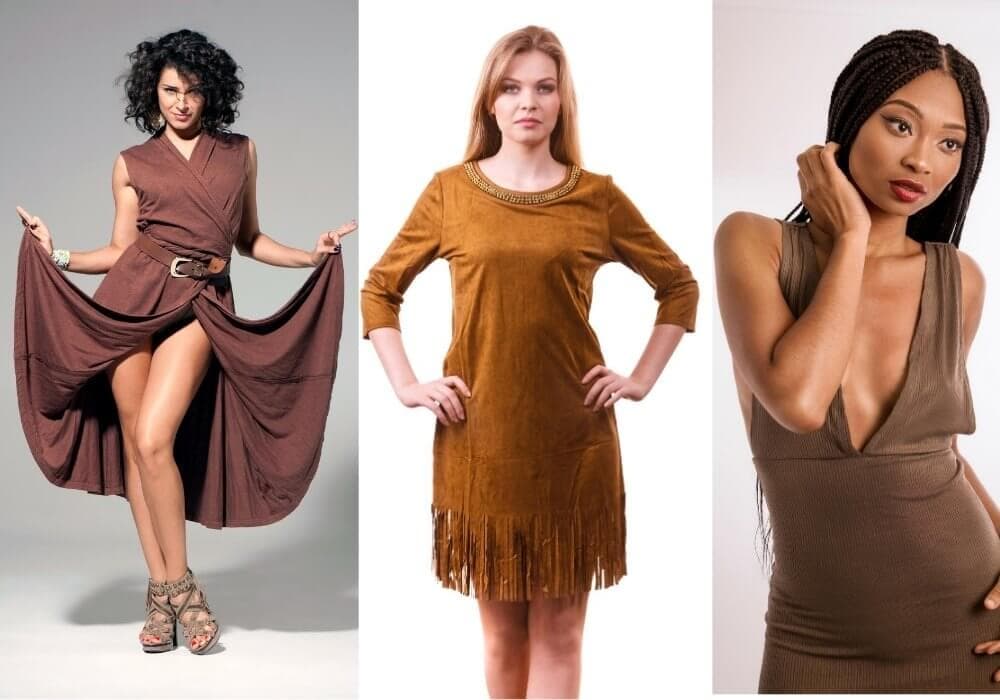
Your love for brown shows you are grounded, reliable, and sensible. Brown in you means stability and a strong connection to the earth. You value comfort and simplicity, choosing a life that’s real and uncomplicated.
You’re dependable and solid, like the ground people walk on. Being practical is key to your personality; you face life realistically and practically. In relationships, others see you as loyal and trustworthy, a strong support for those you care about.
Your choice of brown also shows resilience, the ability to face challenges without faltering. You see beauty in the natural world, enjoying its quiet elegance. You may not be the loudest or most showy, but your warmth and dependability make you a valued friend and confidant.
Essentially, your personality reflects brown’s best traits – solid, nurturing, and lasting. You’re a foundation of strength and dependability, making others feel safe and grounded.
The Use of Brown in Fashion and Jewelry
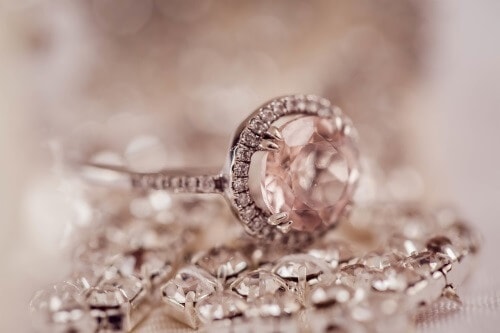
In fashion and jewelry, brown plays a special and flexible role. In clothing, brown varies from light beige to dark chocolate, fitting different styles and times of the year. Designers use brown to give their collections an earthy and elegant look. It matches well with fall colors like orange, red, and yellow, making it a favorite for autumn clothing.
Brown leather in jackets, belts, or boots brings a tough yet sophisticated touch, fitting both old-fashioned and modern looks. In jewelry, brown appears in materials like smoky quartz, tiger’s eye, and bronze. These give jewelry a natural and grounding feel, making them subtle yet eye-catching.
Brown stones have a warm glow and look great with gold and copper, adding a rustic touch. Brown is also versatile in formal clothing, offering a softer choice than black. In accessories, brown balances being neutral and interesting, making it adaptable and noticeable. Brown adds warmth, natural elegance, and a timeless quality to both everyday and high-end fashion.
Superstitions Surrounding the Color Brown
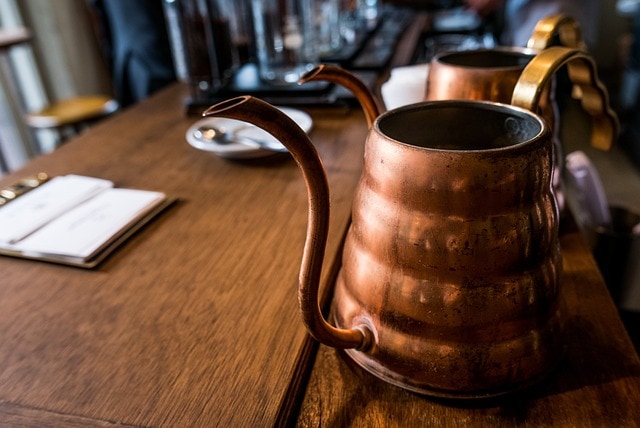
Superstitions surrounding the color brown vary across different cultures and contexts. While not as prevalent or universally recognized as superstitions associated with colors like black or white, brown still holds some interesting beliefs.
1. Earth and Agriculture
In many cultures, people see brown as a lucky color for farming. Wearing brown clothes or using brown tools in agriculture is believed to bring a good harvest.
This is because brown looks like soil, symbolizing fertility and growth. Farmers and gardeners often use brown to connect with the earth’s nurturing power, showing the strong link between farming and nature.
2. Animals
Some folklore traditions view brown animals, especially dogs and cats, as symbols of good luck. Owning a brown pet is thought to bring wealth and happiness to a home. This belief comes from the idea that brown animals blend with nature, showing balance and harmony.
3. Stability in Life
People believe brown can bring stability and protect against uncertainties. Wearing brown or having brown objects around during changes or tough times can provide a sense of grounding. This idea comes from brown’s earthy nature, symbolizing steadiness and resilience.
4. Home and Hearth
In some cultures, brown is thought to protect homes and families. Using brown decorations or objects, like stones or fabrics, is believed to keep away negative energy and ensure the family’s wellbeing. This color creates a barrier against negativity, making the home a safe and peaceful space.
5. Business and Finances
Some business people believe wearing brown attracts financial success. This might be because brown is seen as stable and reliable, important qualities in business. Wearing brown in meetings or negotiations can show solidity and trustworthiness.
6. Protection from the Evil Eye
In some places, people wear brown or use brown amulets to protect against the evil eye or bad luck. This belief is connected to brown’s grounding properties, tied to the earth and nature’s protection. It’s thought to block bad intentions and keep one safe.
Wrapping Up
The color brown is now a much more popular and respected color unlike in the past. It’s a grounded and stable color that provides relaxation and warmth, provided that it’s not overused.





